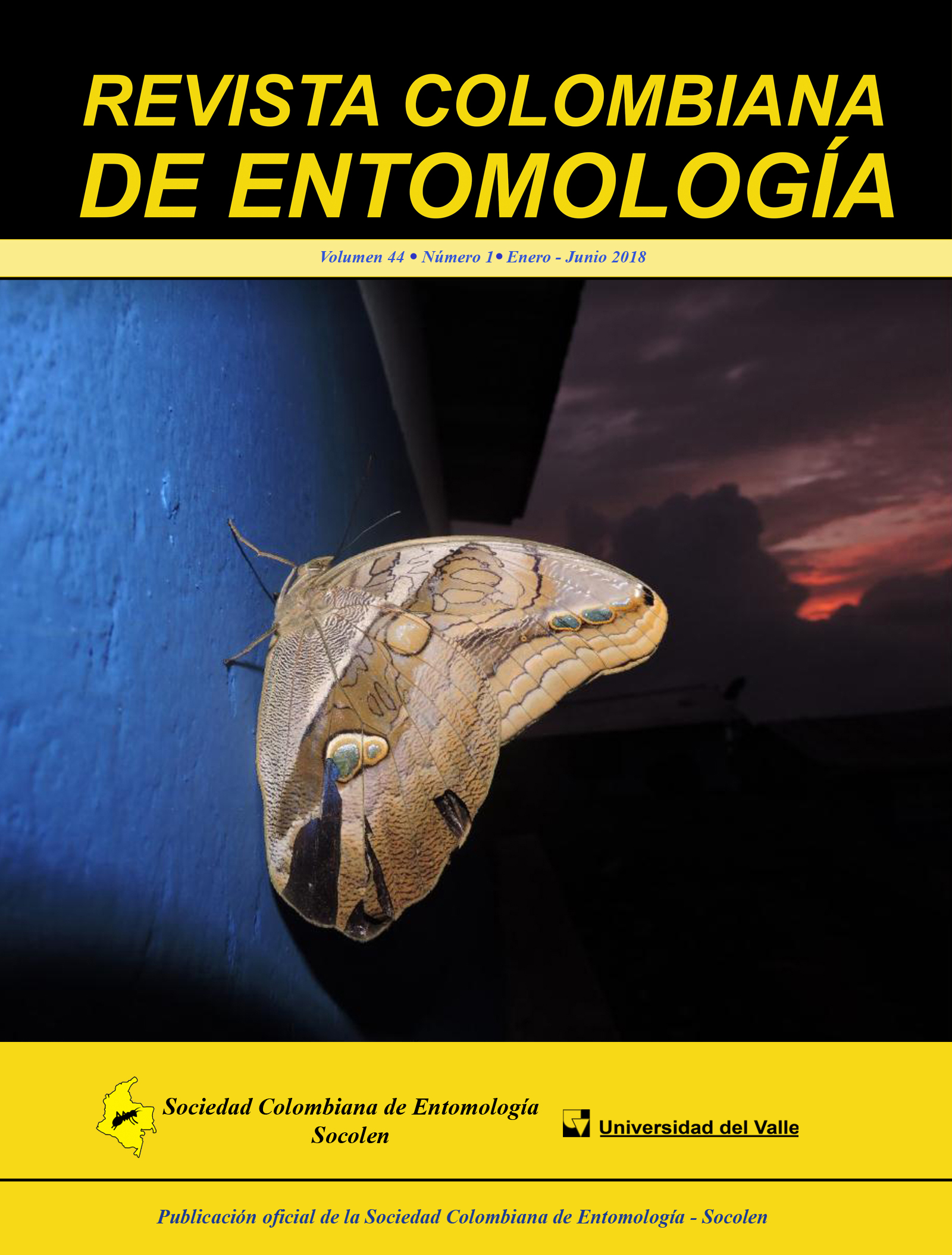Termites (Isoptera: Termitidae, Rhinotermitidae) in Pinus caribaea plantations in the Colombian Orinoco basin
Main Article Content
Termite abundance and diversity on Pinus caribaea stands established on lands previously occupied by a seminatural savanna and artificial grass were examined. Sampling was done during the transition from the dry to the rainy season in 2013 and 2014 (March - April) and the rainy to the dry season in 2013 (November - December) in plantations established in the Colombian Orinoco basin region, commonly known as “Mesa de San Pedro” (Villanueva, Casanare). Using the transect protocol, stands of Pinus caribaea of four different ages, and areas with introduced grass and seminatural savanna were sampled. Termite fauna was composed of twenty eight morphospecies belonging to the Termitidae (Apicotermitinae, Nasutitermitinae, Termitinae, Syntermitinae) and Rhinotermitidae (Heterotermitinae and Rhinotermitinae) families. Seven year-old pine stands without pruning or thinning had the most diversity, while natural savanna had a greater number of species than introduced grasses. No significant differences were observed between sampling seasons. The humivorous species Anoplotermes sp. 1 and the xylophagous Heterotermes tenuis were the most common in pine stands, while several species belonging to the humivorous genus Anoplotermes spp. predominated in pastures and savanna vegetation. Changes in the microclimate and increased availability of food resources in older pine stands may explain the higher diversity and abundance of termites in this monoculture as compared to pastures or savanna vegetation, suggesting that termites are interacting with the natural dynamics of plantations by contributing to the decomposition of cellulosic material and the improvement of soil fertility.
- Xylophagous
- forest management
- land uses
Downloads

This work is licensed under a Creative Commons Attribution-NonCommercial-ShareAlike 4.0 International License.
Authors retain the copyright on their work and are responsible for the ideas expressed in them. Once a manuscript is approved for publication, authors are asked for a publication license for the term of legal protection, for all territories that allows the use, dissemination and disclosure of the same.





